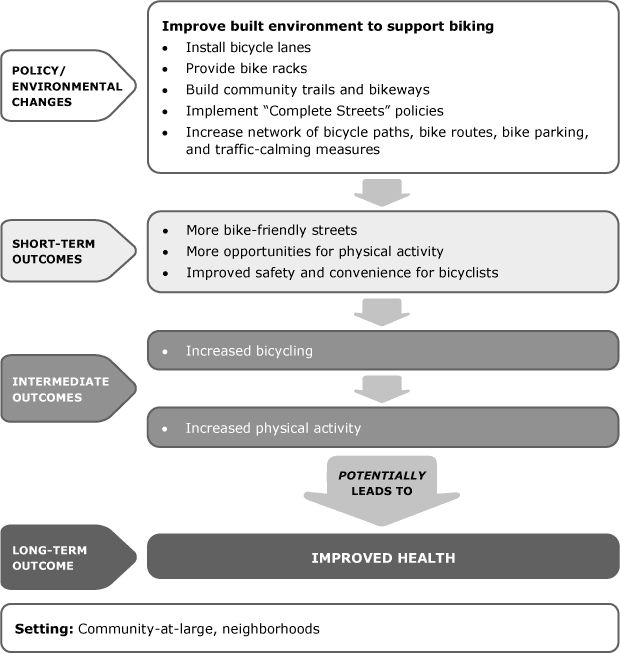Our Healthier Communities
Our Healthier Communities Initiatives are built on the concept that local communities can work together to give all community members healthy choices and support the pursuit of healthy lifestyles. More than 160 Ys are working in collaboration with community leaders to make changes in policies and the physical surroundings in those communities so that healthy living is within reach for individuals of all ages and backgrounds.
Improve Built Environment To Support Biking
Bicycling is an accessible, convenient form of physical activity that people will choose more often when their environment provides safe, convenient places to bike. The use of bicycling has greatly increased in countries that have policies to make bicycling safer, faster and more convenient.
There is a strong relationship between bicycling infrastructure and bicycling for recreation and commuting. The use of bicycling has greatly increased in countries that have policies to make bicycling safer, faster and more convenient. Installing bicycle lanes has a significant impact on bicycle traffic. In contrast, factors found to reduce the use of a bikeway include distance from bikeway, busy street barrier and presence of hills. Installing separate bike paths provides even greater safety and convenience for cyclists. Creating a built environment that is supportive of biking has the potential to increase residents’ physical activity levels and, consequently, improve health.
References
- Dill, J., & Carr, T. (2003). Bicycle commuting and facilities in major US cities: If you build them, commuters will use them. Transportation Research Record, 1828, 03-04134, 116–123.
- Director-General of Transport. (1995). A review of bicycle policy and planning developments in Western Europe and North America-A Literature Search. Government of South Australia.
- Hunt, J.D., & Abraham, J.E. (2007). Influences on Bicycle Use. Transportation: Planning, Policy, Research, Practice, 34, 453–470.
- Macbeth, A.G. (1999). Bicycle lanes in Toronto. Institute of Transportation Engineers, 69(4).
- Pucher, J. (1997). Bicycling boom in Germany: A revival engineered by public policy. Transportation Quarterly, 51(4), 31–46.
- Rietveld, P., & Daniel, V. (2004). Determinants of bicycle use: Do municipal policies matter? Transportation Research Park A, 38, 531–550.
- Slater, S.J., Ewing, R., Powell, L.M., Chaloupka, R.J., Johnston, L.D., & O’Malley, P.M. (2010). The association between community physical activity settings and youth physical activity, obesity, and body mass index. Journal of Adolescent Health, 47(5), 496–503.
- Troped, P.J., Saunders, R.P., Pate, R.R., Reininger, B., & Addy, C.L. (2001). Associations between self-reported and objective physical environmental factors and use of a community rail-trail. Preventive Medicine, 32(2), 191–200.
- National Complete Streets Coalition. (n.d.). Let’s complete America’s streets. Retrieved November 15, 2010, from www.completestreets.org.
